rare
1801, German States, Lubeck (Free City). Gold Ducat Coin. Very Rare! NGC MS-62





1801, German States, Lubeck (Free City). Mint Year: 1801 Mint Place: Lubeck Denomination: Ducat Reference: Friedberg 1500, Jaeger 49, KM-205. Mint Official: Hermann David Friderichsen H. Certified and graded by NGC as MS-62! 986 Diameter: 21mm Weight: 3.5gm. Obverse: Imperial crown above double-headed eagle with shield of Lubeck at chest. Titles of Emperor Francis II around. Reverse: Garlanded table with a 4-lines inscription above date (1801), which is split by a shield with the coat-of-arms of the Mayor. Lübeck is the second largest city in Schleswig-Holstein, in northern Germany, and one of the major ports of Germany. It was for several centuries the “capital” of the Hanseatic League. Queen of the Hanse. And because of its Brick Gothic architectural heritage is on UNESCO’s list of World Heritage Sites. In 1226 Emperor Frederick II declared the city of Lübeck to be an Imperial Free City. In the 14th century Lübeck became the “Queen of the Hanseatic League”, being by far the largest and most powerful member of this medieval trade organization. Several conflicts about trade privileges were fought by Lübeck and the Hanseatic League against Denmark with varying outcomes. While Lübeck and the Hanseatic League prevailed in conflicts in 1435 and 1512, Lübeck lost when it became involved in the Count’s Feud, a civil war that raged in Denmark from 1534 to 1536. Lübeck also joined the Schmalkaldic League. After defeat in Count’s Feud, Lübeck’s power slowly declined. Lübeck managed to remain neutral in the Thirty Years’ War, but with the devastation of the decades-long war and the new transatlantic orientation of European trade, the Hanseatic League and thus Lübeck lost importance. After the Hanseatic League was de facto disbanded in 1669, Lübeck stayed an important trading town on the Baltic Sea. Lübeck remained a Free Imperial City even after the German Mediatisation in 1803 and became a sovereign state after the end of the Holy Roman Empire in 1806. In course of the war of the Fourth Coalition against Napoleon, troops under Bernadotte occupied the neutral Lübeck after a battle against Blücher on November 6th, 1806. Under the Continental System, trade suffered and from 1811 to 1813 Lübeck was formally annexed as part of the First French Empire. The Vienna Congress of 1815 made Lübeck one of 39 sovereign states of the German Confederation. Lübeck became part of the North German Confederation in 1867 and became an autonomous state of the new-founded German Empire in 1871. The item “1801, German States, Lubeck (Free City). Gold Ducat Coin. Very Rare! NGC MS-62″ is in sale since Monday, October 8, 2018. This item is in the category “Coins & Paper Money\Coins\ World\Gold”. The seller is “coinworldtv” and is located in Europe. This item can be shipped worldwide.
- Certification Number: 4617824-009
- Certification: NGC
- Grade: MS62

1792, Portugal, Maria I. Rare Gold 4 Escudos (Peca) Coin. (14.28gm!) PCGS MS-63

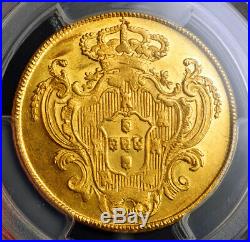



1792, Portugal, Maria I. Rare Gold 4 Escudos (Peca) Coin. Mint Year: 1792 Mint Place: Lisbon Denomination: 4 Escudos (Peca) Reference: Friedberg 116, KM-299. Certifed and graded by PCGS as MS-63! 917 Weight: 14.28gm Diameter: 32mm. Obverse: Draped bust of Maria I “the Mad” right. Reverse: Crowned coat-of-arms of the Portuguese within foliage. Peter III (or Pedro III , 5 July 1717 25 May 1786) became King of the Kingdom of Portugal and the Algarves by the accession of his wife and niece Queen Maria I in 1777, and co-reigned alongside her until his death. Peter was the younger son of John V of Portugal and Maria Anna of Austria. Peter was a younger brother of Joseph I of Portugal. Their maternal grandparents were Leopold I, Holy Roman Emperor, and Eleonor Magdalene of Neuburg, sister of Queen Maria Sofia of Portugal. Peter married Maria, Princess of Brazil, in 1760, at which time she was the heiress-apparent to the throne then held by his brother Joseph I. According to custom, Peter thus became prince of Brazil in right of his wife. They had six children, of whom the eldest surviving son succeeded Maria as John VI on her death in 1816. Peter made no attempt to participate in government affairs, spending his time hunting or in religious exercises. The item “1792, Portugal, Maria I. Rare Gold 4 Escudos (Peca) Coin. (14.28gm!) PCGS MS-63″ is in sale since Sunday, December 23, 2018. This item is in the category “Coins & Paper Money\Coins\ World\Gold”. The seller is “coinworldtv” and is located in Europe. This item can be shipped worldwide.
- Certification: PCGS
- Certification Number: 36335919
- Grade: MS63
- Composition: Gold!
- Year: 1792

1458, Hungary, Mathias Corvinus. Rare Gold Gulden (Ducat) Coin. Gem! PCGS MS-64





1458, Hungary, Mathias Corvinus. Rare Gold Gulden (Ducat) Coin. Certified and graded by PCGS as MS-64! Reference: Friedberg 22, Pohl K15-6, Huszar 680. Denomination: Gold Ducat / Gold Gulden. Mint Place: Nagybanya (n, today´s Baia Mare, Romania) Mint master (Kammergraf): Thomas Altemberger, Bürgermeister. Diameter: 21mm Weight: 3.49gm Material: Gold! Obverse: Saint Ladislaus I standing facing, holding ax and globus cruciger. Mint initial (n) and privy mark (shield with crossed hammers) of the mint official (Thmas Altemberger) in fields. REX Reverse: Crowned Holy Virgin enthroned facing, cradling Holy Infant; thistle head to either side. Legend: + MATTHIAS D (raven with ring in beak) G R VNGARIE. 1040 29 July 1095 was King of Hungary from 1077 until his death, “who greatly expanded the boundaries of the kingdom and consolidated it internally; no other Hungarian king was so generally beloved by the people”. Before his ascension to the throne, he was the main advisor of his brother, Géza I of Hungary, who was fighting against their cousin, King Solomon of Hungary. When his brother died, his followers proclaimed Ladislaus king according to the Hungarian tradition that gave precedence to the eldest member of the royal family to the deceased king’s sons. Following a long period of civil wars, he strengthened the royal power in his kingdom by introducing severe legislation. He also could expand his rule over Croatia. After his canonisation, Ladislaus became the model of the chivalrous king in Hungary. Matthias Corvinus , also called Matthias I Hungarian. 23 February 1443 6 April 1490, was King of Hungary and Croatia from 1458 to 1490. After conducting several military campaigns, he was elected King of Bohemia in 1469 and adopted the title Duke of Austria in 1487. He was the son of John Hunyadi, Regent of Hungary, who died in 1456. In 1457, Matthias was imprisoned along with his older brother, Ladislaus Hunyadi, on the orders of King Ladislaus V of Hungary. Ladislaus Hunyadi was executed, causing a rebellion that forced King Ladislaus to flee Hungary. After the King died unexpectedly, Matthias’s uncle Michael Szilágyi persuaded the Estates to unanimously proclaim Matthias king on 24 January 1458. He began his rule under his uncle’s guardianship, but he took effective control of government within two weeks. As king, Matthias waged wars against the Czech mercenaries who dominated Upper Hungary (today parts of Slovakia and Northern Hungary) and against Frederick III, Holy Roman Emperor, who claimed Hungary for himself. In this period, the Ottoman Empire conquered Serbia and Bosnia, terminating the zone of buffer states along the southern frontiers of the Kingdom of Hungary. Matthias signed a peace treaty with Frederick III in 1463, acknowledging the Emperor’s right to style himself King of Hungary. In this year, Matthias invaded the territories that had recently been occupied by the Ottomans and seized fortresses in Bosnia. He soon realized he could expect no substantial aid from the Christian powers and gave up his anti-Ottoman policy. These measures caused a rebellion in Transylvania in 1467, but he subdued the rebels. The next year, Matthias declared war on George of Podbrady, the Hussite King of Bohemia, and conquered Moravia, Silesia, and Lausitz, but he could not occupy Bohemia proper. The Catholic Estates proclaimed him King of Bohemia on 3 May 1469, but the Hussite lords refused to yield to him even after the death of their leader George of Podbrady in 1471. Instead, they elected Vladislaus Jagiellon, the eldest son of Casimir IV of Poland. A group of Hungarian prelates and lords offered the throne to Vladislaus’s younger brother Casimir, but Matthias overcame their rebellion. Having routed the united troops of Casimir IV and Vladislaus at Breslau in Silesia (now Wrocaw in Poland) in late 1474, Matthias turned against the Ottomans, who had devastated the eastern parts of Hungary. He sent reinforcements to Stephen the Great, Prince of Moldavia, enabling Stephen to repel a series of Ottoman invasions in the late 1470s. In 1476, Matthias besieged and seized abac, an important Ottoman border fort. He concluded a peace treaty with Vladislaus Jagiellon in 1478, confirming the division of the Lands of the Bohemian Crown between them. Matthias waged a war against Emperor Frederick and occupied Lower Austria between 1482 and 1487. Matthias established a professional army (the Black Army of Hungary), reformed the administration of justice, reduced the power of the barons, and promoted the careers of talented individuals chosen for their abilities rather than their social statuses. Matthias patronized art and science; his royal library, the. Was one of the largest collections of books in Europe. With his patronage, Hungary became the first country to embrace the Renaissance from Italy. As Matthias the Just, the monarch who wandered among his subjects in disguise, he remains a popular hero of Hungarian folk tales. The item “1458, Hungary, Mathias Corvinus. Rare Gold Gulden (Ducat) Coin. Gem! PCGS MS-64″ is in sale since Wednesday, December 19, 2018. This item is in the category “Coins & Paper Money\Coins\ World\Gold”. The seller is “coinworldtv” and is located in Europe. This item can be shipped worldwide.
- Certification: PCGS
- Certification Number: 36336130
- Year: 1458-1490
- Grade: MS64
- Composition: Gold

1874, Russia, Emperor Alexander II. Rare Gold 5 Roubles Coin. Gem! PCGS MS-63





1874, Russia, Emperor Alexander II. Rare Gold 5 Roubles Coin. Mint Year: 1874 Denomination: Gold 5 Roubles Mint Place: St. Certified and graded by NGC as MS-63 only three equal graded at PCGS and only one higher at MS64! 917 Weight: 6.54gm. Obverse: Large value numeral (5), flanked by rosettes. Denomination (“ROUBLES”), arabesques, date (1874) and mint initials… PURE GOLD 1 ZOLOTNIK 39 DOLS. Reverse: Large crown above crowned double-headed eagle, holding imperial scepter and orb. Mint master`s H-I initials below. 17 April 1818 in Moscow 13 March O. 1 March 1881 in Saint Petersburg was the Emperor of Russia from 2 March 1855 until his assassination in 1881. He was also the King of Poland and the Grand Duke of Finland. Alexander’s most significant reform as emperor was emancipation of Russia’s serfs in 1861, for which he is known as Alexander the Liberator. The tsar was responsible for other reforms, including reorganizing the judicial system, setting up elected local judges, abolishing corporal punishment, promoting local self-government through the. System, imposing universal military service, ending some privileges of the nobility, and promoting university education. He sought peace, moved away from bellicose France when Napoleon III fell in 1871, and in 1872 joined with Germany and Austria in the League of the Three Emperors that stabilized the European situation. Despite his otherwise pacific foreign policy, he fought a brief war with Turkey in 187778, pursued further expansion into Siberia and the Caucasus, and conquered Turkestan. Although disappointed by the results of the Congress of Berlin in 1878, Alexander abided by that agreement. Among his greatest domestic challenges was an uprising in Poland in 1863, to which he responded by stripping that land of its separate constitution and incorporating it directly into Russia. Alexander was proposing additional parliamentary reforms to counter the rise of nascent revolutionary and anarchistic movements when he was assassinated in 1881. The item “1874, Russia, Emperor Alexander II. Rare Gold 5 Roubles Coin. Gem! PCGS MS-63″ is in sale since Friday, July 6, 2018. This item is in the category “Coins & Paper Money\Coins\ World\Gold”. The seller is “coinworldtv” and is located in Europe. This item can be shipped worldwide.
- Certification Number: 35329085
- Certification: PCGS
- Grade: MS63

RARE 1976 Hong Kong $1000 Gold Dragon PROOF Coin NGC PF70 Perfect Grade


This coin is very rare and very hard to come by. Its Certify Perfect Grade PROOF PF70 by NGC. A prestige grading company. The Coin contains approx. Nly 6911 pcs were ever struck. A great collectors item. Makes a great gift, especially for those who are born on the dragon years on the Lunar calendar. (1928,1940,1952,1964,1976,1988, 2000,2012). Year 1976 is a Dragon year. The Dragon is the ultimate symbol of the wisdom and culture of the chinese nation. For thousands of years it has represented the people’s spirit for advancement and their desire to express themselves through the beauty of life. The dragon is seen as the incarnation of power and authority, it can change its shape, swim the deepest seas and fly to the heavens. Of all the Chinese symbols, it is regarded as the most important , commanding heavenly dignity and is often depicted among the clouds The Dragon Throughout history, in virtually every part of the world, mans imagination has been fueled by the magic and majesty of dragons. These strict guardians have protected buried treasure, golden fleece, even immortality. In China, the dragon has prevailed as the trusted custodian of the highest fonn of wisdom the pearl. As a supernatural power, the dragon became the symbol reserved strictly for the Emperor. Those who chose to embroider a dragon upon their clothing dared to equate themselves with the Emperor and did so at their own peril. Dragon and Emperor were one. The dragons pearl, believed to reside in the dragons throat, represented the indisputable authority of the Emperors words. At the dawn of a new millennium, “The Year of the Dragon” brings with it the promise of prosperity. If you have any questions, Please feel free to contact me at my ebaystore link below and. Get Images that Make Supersized Seem Small. Tailor your auctions with Auctiva’s. Track Page Views With. Auctiva’s FREE Counter. The item “RARE 1976 Hong Kong $1000 Gold Dragon PROOF Coin NGC PF70 Perfect Grade” is in sale since Thursday, September 21, 2017. This item is in the category “Coins & Paper Money\Coins\ World\Gold”. The seller is “jon_sold_it” and is located in Fresh Meadows, New York. This item can be shipped worldwide.

100% Genuine Vintage 8k Solid Yellow Gold Rare Coin Signet Ring Sz 7.5 US



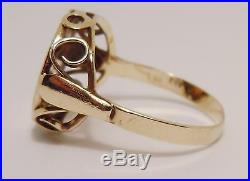





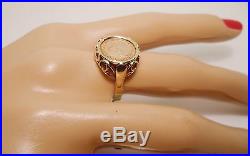



100% Genuine Vintage 8K Solid Yellow Gold Rare Coin Signet Ring Sz 7.5 US. Coin face reads “John F Kennedy” & “Robert F Kennedy”. This is rare John & Robert brothers commemorative coin. Coin and some shoulder are made of Yellow Gold. Setting has filigree patterns in the bridge. Included in independent evaluation certificate issued by a Czech valuer. Prague use to be the centre of Europe in the old days. Rich is culture and history. Ested by Jeweller, Genuine Gold Guaranteed. UK, Europe & Australia. Bottom Width – 2 mm. Facing Dimension – 14 mm. Please ask if any question. All items I sell are real solid gold. I do not sell low quality fake items. Gold Plated or filled or layered or rolled items are not really gold and does not have much gold value. They are hard to resell. Solid gold jewellery contains high quantity of gold and will always resell even when they are damaged. Buyers should always ask the sellers if the item they are interested in is real solid gold. Most of the solid gold items are stamped which show the content of gold. 375 stamp means 9ct solid gold. 750 or 18k are solid 18 carat gold. 585 or 14k represent 14 carat solid gold. After you receive the item always get them checked by a professional. Please contact me if you would like to know anything about gold hallmarks or anything else. I’m always happy to help. The item “100% Genuine Vintage 8k Solid Yellow Gold Rare Coin Signet Ring Sz 7.5 US” is in sale since Tuesday, August 1, 2017. This item is in the category “Jewellery & Watches\Fine Jewellery\Rings”. The seller is “sneu373″ and is located in Brisbane, QLD. This item can be shipped worldwide.
- Brand: Unbranded
- Metal: Yellow Gold
- Style: Coin Signet
- Fancy Diamond Colour: Yellow
- Product Type: Rings
- Featured Refinements: Solid Gold Ring
- Size US: 7.5
- Size AUS/UK: O 1/2
- Origin: Bohemia
- Gold type: Solid gold
- Hallmark: 333
- Weight: 2.25 gm
- Origin Name: Czech
- Pattern: Filigree
- Text 1: John F Kennedy
- Text 2: Kennedy
- Text 3: Robert

1887 Great Britain Gold 5 Pound 40 gram Gold Coin Queen Victoria RARE




1887 Great Britain Gold 5 Pound 40 gram Gold Coin Queen Victoria RARE. The item “1887 Great Britain Gold 5 Pound 40 gram Gold Coin Queen Victoria RARE” is in sale since Saturday, November 24, 2018. This item is in the category “Coins & Paper Money\Coins\ World\Europe\UK (Great Britain)\Gold”. The seller is “dimjo80″ and is located in Amman. This item can be shipped worldwide.
- Composition: Gold
- Year: 1887
- Grade: Ungraded
- Country/Region of Manufacture: United Kingdom
- Certification: Uncertified

1911 D $20 Twenty Dollar ST. Gaudens Gold US Rare Solid Gold Collectable Coin




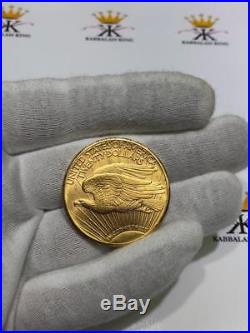
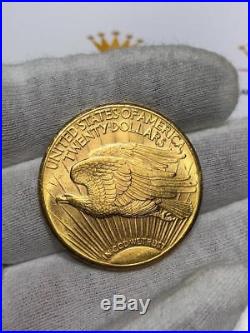

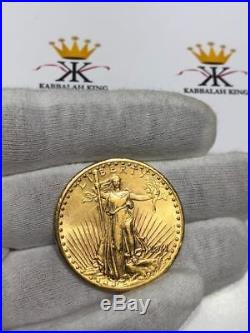

Gaudens Gold US Rare Solid Gold Collectable Coin. All our watches are Guaranteed 100% Authentic. All our products are Brand new, never used unless otherwise stated. The item “1911 D $20 Twenty Dollar ST. Gaudens Gold US Rare Solid Gold Collectable Coin” is in sale since Thursday, November 1, 2018. This item is in the category “Coins & Paper Money\Coins\ US\Gold (Pre-1933)\$20, Double Eagle”. The seller is “kabbalahking” and is located in Hauppauge, New York. This item can be shipped worldwide.
- Year: 1911
- Certification: Uncertified
- Composition: Gold
